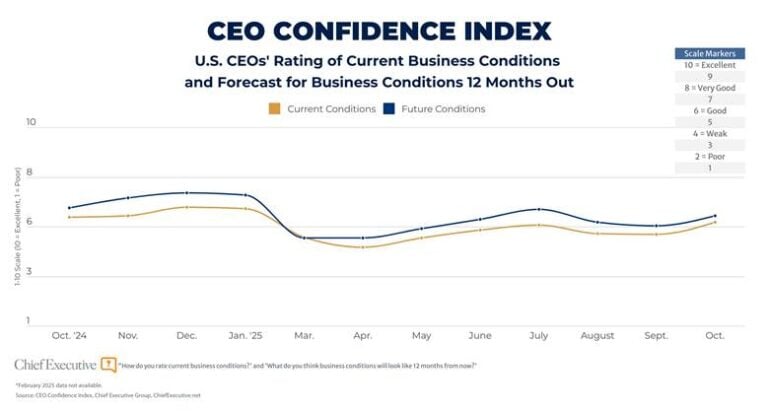
 To encourage economic development, state and local governments invest in incentives to attract and retain businesses. Of course, these incentives aren’t the sole reason you should consider expanding or relocating, but they can help tip the scales after you narrow down final locations based on real estate, workforce, logistics, quality of life, and other factors. In the U.S., the estimated total annual value of fiscal incentives (such as grants, rebates, subsidies, and tax credits) is about $45 billion to $90 billion.
To encourage economic development, state and local governments invest in incentives to attract and retain businesses. Of course, these incentives aren’t the sole reason you should consider expanding or relocating, but they can help tip the scales after you narrow down final locations based on real estate, workforce, logistics, quality of life, and other factors. In the U.S., the estimated total annual value of fiscal incentives (such as grants, rebates, subsidies, and tax credits) is about $45 billion to $90 billion.
Regardless of where the numbers fall for the future of economic development incentives, there have been some recent conversations about their direction. Traditionally, state and local governments anchor their definition of “economic development” in how many jobs are created. Currently, it’s one of the main metrics and the reason many incentives favor projects with large head counts.
But because of recent events—such as a global pandemic and the Great Resignation—a jobs-only metric might not be the best way to measure a business’s economic development impact. After narrowing down your location options, you should consider which business incentives will be the most relevant moving forward.
During my career, I have had experience working either with or in competition with multiple states. It has been fascinating to see the evolution of financial incentives over the past 25 years. A traditional job centric metric is really only telling one part of the story. You might be creating a lot of jobs, but there are other factors that might come into play. Some large head count operations might not pay as well, so they may not qualify for some state and local incentives regardless of how many jobs are at stake. For example, some distribution centers and call centers tend to pay lower average wages than manufacturing or front office positions.
State and local governments typically base their incentive offers on the ultimate economic impact to a state or region. Of course, lower-paying jobs do not usually generate as much economic activity as higher-paying ones. Considering that businesses all over the country are struggling to fill positions, you might not see large incentive offers focused on jobs alone.
Measuring capital expenditure and payroll often better represent your company’s development potential. According to S&P Global Ratings, global corporate capital expenditures were expected to grow 13.3% in 2021, and the Labor Department reports that in 2021, wages increased more than they have in 20 years. But the job market has remained tumultuous and unpredictable since the start of Covid-19.
Additionally, an increasing number of companies now realize that artificial intelligence, machine learning, and automation allow them to do more with fewer workers. Employers pay around 25 cents in taxes for every dollar they pay employees. With the ability to write off capital investments, it’s only 5 cents for every dollar spent on machines. This encourages businesses to automate. Hence, you should also understand business incentives that measure capital expenditure and payroll, not just the number of jobs.
Several states have recognized this trend. Missouri, for instance, now offers a sales tax exemption program for new and expanding data centers. Data centers tend to be very capital-intensive with lower head counts. TierPoint, an IT service management company, recently took advantage of this program. It’s now set to build a new data center in suburban St. Louis using sales tax exemptions on equipment (including equipment refresh), construction materials, and energy usage. Furthermore, when state and local governments see larger capital investment in their community, it signals a company’s long-term commitment to the area.
The jobs metric is still tied to a lot of economic development incentives. However, as companies continue to increase wages, improve employee benefits, and invest in new technologies, capital expenditure and payroll will become bigger factors in government incentives for businesses.
Here’s what you should do when it comes to evaluating business incentives:
1. Focus on the important location criteria first. If you’re expanding or relocating, you need to choose a location with more than just attractive economic development incentives. Workforce, real estate, industry ecosystem, business climate, operating costs, quality of life, and other factors should be considered long before incentives are in play. A 2019 survey found that businesses scouting new locations ranked labor availability and quality of life above incentives. Weighing the benefits of financial incentives too heavily or focusing on them before finding truly viable options can lead to disastrous results.
2. Get your ducks in a row. Be sure to review program agreements before committing. Take the time to gather and submit accurate and credible information. Consider being conservative in your figures. Underperforming what you commit to initially could impact your company’s eligibility to realize those incentives. The old adage to under promise and overdeliver applies to financial incentives.
3. Make sure you fully understand what is being offered. Some incentive offers appear more attractive than they really are. For example, some states offer tax credits that can only be used if a company has a tax liability. If you are not yet to the point of carrying a tax liability, those tax credits may have little or no value. In Missouri, for example, most tax credits are refundable, transferable or sellable.
Beware of offers of “free land.” While the prospect of a free site can be tempting, sometimes additional site work or utility infrastructure may be needed, deeming the property anything but free.
4. Weigh the overall impact of the incentives. Remember that public dollars are in play, and taxpayers’ dollars often come with certain constraints. There may be substantive reporting, compliance requirements or accompanying fees. In some jurisdictions, you may be asked to reveal information some companies consider proprietary or sensitive that could be subject to the Freedom of Information Act.
Be mindful of “reputation risk.” Incentive offers can make headlines. In the expanding era of social media, you should be aware of the court of public opinion when it comes to financial incentives. More and more companies are adopting or revising their ESG goals. Be sure that public financial incentives are congruent with your company’s ESG priorities.




0

1:00 - 5:00 pm
Over 70% of Executives Surveyed Agree: Many Strategic Planning Efforts Lack Systematic Approach Tips for Enhancing Your Strategic Planning Process
Executives expressed frustration with their current strategic planning process. Issues include:
Steve Rutan and Denise Harrison have put together an afternoon workshop that will provide the tools you need to address these concerns. They have worked with hundreds of executives to develop a systematic approach that will enable your team to make better decisions during strategic planning. Steve and Denise will walk you through exercises for prioritizing your lists and steps that will reset and reinvigorate your process. This will be a hands-on workshop that will enable you to think about your business as you use the tools that are being presented. If you are ready for a Strategic Planning tune-up, select this workshop in your registration form. The additional fee of $695 will be added to your total.

2:00 - 5:00 pm
Female leaders face the same issues all leaders do, but they often face additional challenges too. In this peer session, we will facilitate a discussion of best practices and how to overcome common barriers to help women leaders be more effective within and outside their organizations.
Limited space available.

10:30 - 5:00 pm
General’s Retreat at Hermitage Golf Course
Sponsored by UBS
General’s Retreat, built in 1986 with architect Gary Roger Baird, has been voted the “Best Golf Course in Nashville” and is a “must play” when visiting the Nashville, Tennessee area. With the beautiful setting along the Cumberland River, golfers of all capabilities will thoroughly enjoy the golf, scenery and hospitality.
The golf outing fee includes transportation to and from the hotel, greens/cart fees, use of practice facilities, and boxed lunch. The bus will leave the hotel at 10:30 am for a noon shotgun start and return to the hotel after the cocktail reception following the completion of the round.